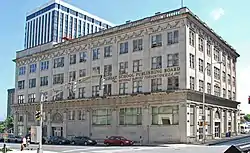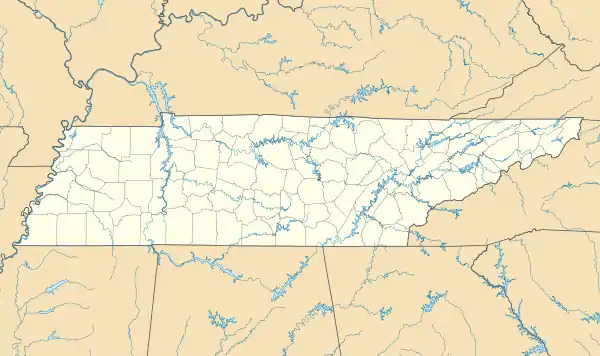Morris Memorial Building | |
 The Morris Memorial Building in 2010 | |
 | |
| Location | 330 Charlotte Avenue, Nashville, Tennessee, U.S. |
|---|---|
| Coordinates | 36°10′01″N 86°46′49″W / 36.16694°N 86.78028°W |
| Built | 1924–1926 |
| Architect | McKissack & McKissack |
| Architectural style | Neoclassical |
| NRHP reference No. | 85000046[1] |
| Added to NRHP | January 2, 1985 |
The Morris Memorial Building is a historic building in Nashville, Tennessee, United States. It was built in the 1920s for the African-American National Baptist Convention, USA, Inc. and was named for longtime president Elias Camp Morris.
Location
The building is located at 330 Charlotte Avenue in Nashville, the county seat of Davidson County, Tennessee.[2][3]
History
Construction began in 1924, and it was completed in 1926.[3] It was built for the National Baptist Convention, USA, Inc., an African-American Christian denomination, to house the Nashville offices of the denomination's Sunday School Publishing Board.[3][4] The building was also home to African-American businesses.[3]
By 2016, it was "the only building still standing that is originally associated with African-American businesses in the downtown core", according to The Tennessean.[5]
Architectural significance
The building was designed in the Neoclassical architectural style by the architectural firm McKissack & McKissack.[3] It has been listed on the National Register of Historic Places since January 2, 1985.[2]
References
- ↑ "National Register Information System". National Register of Historic Places. National Park Service. July 9, 2010.
- 1 2 "Morris Memorial Building". National Park Service. Retrieved September 25, 2015.
- 1 2 3 4 5 "Tennessee Thematic Resource Nomination Survey Form: Morris Memorial Building". National Park Service. Retrieved September 24, 2015.
- ↑ Wynn, Linda T. "McKissack and McKissack Architects (1905- )". Tennessee State University. Retrieved October 25, 2016.
- ↑ Ward, Getahn. "2016 Nashville Nine: Music City's most endangered historic places". The Tennessean. The Tennessean. Retrieved October 25, 2016.